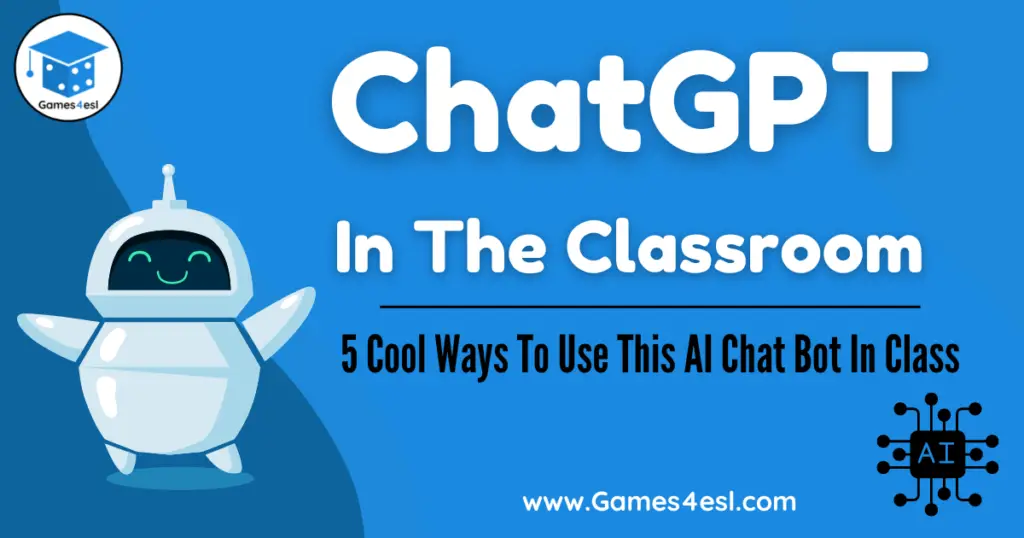Implementing ChatGPT in Classroom Management and Organization

Introduction
ChatGPT, a cutting-edge language model, presents educators with unprecedented opportunities to enhance classroom management and organization. Its ability to generate text, answer questions, and provide personalized feedback makes it an invaluable tool for streamlining administrative tasks and fostering student engagement.
Administrative Tasks Automation
ChatGPT can automate time-consuming administrative tasks, freeing up teachers for more impactful activities. For example, it can:
- Create assignments and rubrics: ChatGPT can generate assignments aligned with specific learning objectives, saving teachers from hours of manual work.
- Grade short answer responses: It can quickly and accurately grade simple questions, providing instant feedback to students.
- Provide attendance notes: ChatGPT can generate personalized attendance notes for absent students, ensuring they stay informed about missed material.
Personalized Student Support
ChatGPT empowers students with constant access to personalized support. It can:
- Answer questions 24/7: Students can ask ChatGPT specific questions about course material, homework assignments, or learning strategies.
- Provide personalized feedback: ChatGPT can analyze student submissions and provide tailored feedback on areas needing improvement.
- Offer individual study plans: Based on student input, ChatGPT can generate personalized study plans to guide their preparation for assessments.
Improved Communication
ChatGPT enhances communication between teachers and students. It can:
- Send reminders and notifications: ChatGPT can manage automated reminders about upcoming deadlines, events, and assignments.
- Facilitate student feedback: Students can use ChatGPT as a platform to provide anonymous feedback on teaching methods or course materials.
- Translate language barriers: ChatGPT can translate communications into multiple languages, fostering inclusivity for diverse student populations.
Challenges and Cautions
While ChatGPT offers immense potential, certain challenges need consideration:
- Accuracy and Bias: ChatGPT’s responses should be carefully evaluated for accuracy and potential biases.
- Authenticity: Educators must ensure that students are using ChatGPT appropriately for learning purposes and not for plagiarism.
- Ethics and Privacy: The use of ChatGPT must comply with ethical guidelines and data privacy regulations.
Conclusion
ChatGPT is a transformative tool that can revolutionize classroom management and organization. By automating administrative tasks, providing personalized student support, and enhancing communication, ChatGPT empowers teachers to create more effective and engaging learning environments. However, it is crucial for educators to approach the implementation of ChatGPT thoughtfully and with careful consideration of its challenges. By embracing responsible practices, educators can harness the full potential of ChatGPT to unlock new possibilities in education.## Implementing ChatGPT in Classroom Management and Organization
Executive Summary

ChatGPT, a powerful chatbot, offers transformative potential for classroom management and organization. Its ability to automate tasks, provide personalized support, and enhance engagement makes it an invaluable tool for educators. This article explores the key subtopics and benefits of implementing ChatGPT in the classroom, providing educators with actionable strategies for leveraging this technology effectively.

Introduction
In today’s digital age, educators are constantly seeking innovative tools to enhance student learning and streamline classroom operations. ChatGPT, an advanced chatbot powered by artificial intelligence (AI), has emerged as a promising solution to address these challenges. Its diverse capabilities make it an indispensable assistant for classroom management and organization, empowering educators to focus on fostering a positive and productive learning environment.
FAQs
-
What is ChatGPT and how does it work?
ChatGPT is a chatbot developed by OpenAI that utilizes deep learning algorithms to provide conversational responses and generate text based on user inputs. -
How can ChatGPT be used in the classroom?
ChatGPT offers a wide range of applications in the classroom, including automating tasks, creating personalized learning resources, providing instant support, and facilitating interactive discussions. -
Is ChatGPT safe and appropriate for students?
ChatGPT is generally safe for use in educational settings, but educators should implement appropriate guidelines and monitor its usage to prevent misuse.
Subtopics
1. Automating Routine Tasks
- Automated grading: ChatGPT can quickly and accurately grade quizzes, assignments, and essays, freeing up teachers’ time for more meaningful tasks.
- Instant feedback: Students receive real-time feedback on their work, helping them identify errors and improve their learning.
- Personalized homework: ChatGPT can generate personalized homework assignments tailored to each student’s abilities and progress.
- Student progress tracking: ChatGPT can monitor student progress and generate reports, allowing teachers to identify areas for improvement and provide timely interventions.
2. Personalized Support for Students
- Instant answers: Students can get immediate answers to questions and clarifications on course material, reducing frustration and enhancing comprehension.
- On-demand support: ChatGPT is available 24/7, providing students with round-the-clock support and encouragement.
- Personalized learning paths: ChatGPT can create individualized learning paths for students based on their needs and preferences.
- Virtual study buddy: ChatGPT serves as a supportive and engaging study companion, providing encouragement and guidance.
3. Enhanced Engagement and Interactivity
- Classroom discussions: ChatGPT can facilitate interactive classroom discussions by generating discussion prompts, moderating debates, and providing summary insights.
- Gamification: ChatGPT can incorporate game elements into the learning process, making it more engaging and motivating for students.
- Interactive simulations: ChatGPT can create realistic simulations or scenarios, allowing students to experience and apply their knowledge in a safe and controlled environment.
- Collaborative projects: ChatGPT helps students collaborate on projects by providing a platform for real-time brainstorming, document sharing, and project management.
4. Content Creation and Delivery
- Personalized learning materials: ChatGPT can generate tailored lesson plans, presentations, and quizzes based on curriculum goals and student needs.
- Engaging video lessons: ChatGPT empowers educators to create engaging and interactive video lessons with voiceovers and annotations.
- Intelligent tutoring: ChatGPT acts as a virtual tutor, providing additional explanations and examples based on student inquiries.
- Dynamic content updates: ChatGPT keeps educators informed of the latest educational resources and best practices.
5. Adaptive and Personalized Learning
- Differentiated instruction: ChatGPT helps teachers differentiate instruction by identifying student strengths and weaknesses and providing customized support.
- Personalized learning plans: ChatGPT tailors learning plans to individual students’ learning styles, allowing them to progress at their own pace.
- Real-time adjustment: ChatGPT monitors student progress and adjusts learning materials and support based on their individual needs.
- Data-driven insights: ChatGPT provides data-driven insights into student performance, helping educators make informed decisions and refine their teaching approach.
Conclusion
ChatGPT is a transformative tool that has the potential to revolutionize classroom management and organization. Its ability to automate tasks, provide personalized support, and enhance engagement makes it an invaluable ally for educators. By leveraging its capabilities effectively, educators can create more efficient, engaging, and personalized learning experiences for their students. As the technology continues to evolve, educators should embrace the transformative potential of AI and explore innovative ways to harness ChatGPT for the benefit of their classrooms.
Relevant Keyword Tags:
- ChatGPT
- Classroom Management
- Organization
- Artificial Intelligence
- Personalized Learning
